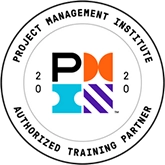Improvisational Leadership
Improvisational leaders accept change quickly and look for opportunities immediately.

Leaders at all levels who want to increase innovation in every day interactions can benefit from learning improvisational leadership techniques. In an average day, your environment may change hundreds of times. Understanding the nuances of each of these environments has a tremendous impact on your ability to perform at your peak. Practicing improvisational techniques will allow you to quickly analyze changing environmental conditions and communicate quickly and effectively within them. In this paper, you’ll learn how to enhance your ability to interpret and adapt to their ever-changing environment through an ever-present focus on your goals.
Introduction
 Learning improvisational leadership skills develops your ability for “yes and:” We’re all highly skilled and practiced at critiquing, judging, and defining. We’re trained at saying “no."” We have great muscles for that. Strengthen your affirmation muscles. The “yes and” approach gives us the ability to respond to potentially stressful situations in a more relaxed, productive, and relationship-building way. These two words have a powerful effect on all relationships, motivation, and creativity. “Yes and” can be used to positively refocus unproductive conversations, and to redirect brainstorming to be more effective. As a wonderful side-benefit, these skills help us to be more amicable, popular, and influential in personal relationships as well.
Learning improvisational leadership skills develops your ability for “yes and:” We’re all highly skilled and practiced at critiquing, judging, and defining. We’re trained at saying “no."” We have great muscles for that. Strengthen your affirmation muscles. The “yes and” approach gives us the ability to respond to potentially stressful situations in a more relaxed, productive, and relationship-building way. These two words have a powerful effect on all relationships, motivation, and creativity. “Yes and” can be used to positively refocus unproductive conversations, and to redirect brainstorming to be more effective. As a wonderful side-benefit, these skills help us to be more amicable, popular, and influential in personal relationships as well.
Improvisational Leaders
Improvisational leaders accept change quickly and look for opportunities immediately. If they need to vent, they do it quickly and well, not wasting time playing the blame game. They choose to be optimistic and seek solutions and they are also more successful, flexible, likeable, respected, and even healthier!
Who Can Benefit?
Leaders at all levels who want to increase innovation in every day interactions can benefit from learning improvisational leadership techniques. Anyone who wants to more positively enhance morale in subordinates, create a more energetic culture, and respond spontaneously in a motivational way will also benefit. In turn, they will achieve a stronger presence and more positive attitude, as well as encourage healthy risk taking and build on their strengths; in addition to all of this, one will learn:
- Increased ability to respond positively in fast moving situations
- Develop impromptu creativity
- Enhanced presentation skills
- Improved listening and communication skills
- Understanding of the responsibilities and challenges of leadership
- Understanding how our words and tone of voice effect others
- Being able to craft our language to influence others more powerfully
- Influencing ourselves for greater confidence, motivation, and solution focus
- Gaining skill in using calm focus to manage stressful situations
 I’ve led over twenty courses on Improvisational Leadership around the country; these are highly interactive events with a lot of student input and discussion. I have learned a lot from the students I’ve taught, and some of the key lessons that the students shared were:
I’ve led over twenty courses on Improvisational Leadership around the country; these are highly interactive events with a lot of student input and discussion. I have learned a lot from the students I’ve taught, and some of the key lessons that the students shared were:
- Improvisational tools can be layered on almost any management approach to add even more value
- Any culture can increase its capability to improvise in ever-changing situations
- The more leadership models and rewards positive and risk-taking and adaptation, the faster the organization can improvise
- The “yes and” approach can help make any relationship better — even with oneself
- One of the side benefits of using improvisational leadership techniques is being more approachable and popular
- “These same tools have helped me be a better parent.”
- “I learned a lot, and the course was a blast.”
- “I’m more effective and I make work more fun for people”
Creating an Improvisational Culture
Evaluating Your Organization
Improvisational leadership sounds like a great idea for your organization, but how can you make it part of your organizational culture? Let’s get started with identifying a few of the top characteristics of an improvisational culture. How many does your organization have?
- Clear goals, great training, and flexible plans
- Allow people to use talent and goal focus to grab opportunities of the moment
- Moments of “group flow”
- That particular state of heightened consciousness in the team that fosters great creativity and very high engagement (Dr. Mihaly Csikszentmihalyi, University of Chicago Psychologist, 2011)
- Innovation emerges from the bottom up
- Often from random encounters with potential customers asking radical questions
- Collaborative creativity feels like “jamming” (John Kao, Harvard Professor, 2011) — it’s energizing, unpredictable, and produces great results
- New ideas are valued — even those that aren’t used are seen as positive contributions to the group
- “yes and” practiced — rather than criticizing ideas and practices and building on them.
- No wasting time and energy with blaming
- Jump straight to what you do like about a plan and guiding it in a positive direction with positive questions about how to make it fit certain criteria, and so forth.
The good news is that cultures can become more improvisational. This can be done whether it’s a slow change over time, or a rapid transformation (with the right guidance). The use of positive change approaches, such as Appreciative Inquiry, Solutions Focus, Strength-based development, and Positive Psychology are very helpful for guiding an organization in becoming more improvisational. Our firm uses a variety of positive change methods, which vary with each client.
Improvisational Organizations: Fun and Profitable
 Imagine creating an improvisational culture in your company that is fast, flexible, empowered, and positive. Imagine your people guided more by principles and less by rules. Picture them quickly adapting with resilience to customer needs, market changes, and sales surprises.
Imagine creating an improvisational culture in your company that is fast, flexible, empowered, and positive. Imagine your people guided more by principles and less by rules. Picture them quickly adapting with resilience to customer needs, market changes, and sales surprises.
Get everyone engaged in sustainable profitability with clear metrics, a motivating environment, and room to experiment! In an improvisational culture, a leader’s primary focus is keeping up with the needs of the groups he or she supports (rather than manages).
Useful information flows throughout the company to where it’s needed. People keep each other on track because they’re passionate about the goals and don’t want any slackers holding them back. Fun is a staple of an energized environment.
Apple Inc. is a great example of a successful company that uses improvisational approaches. Apple has gone to great lengths to create their “DNA” as a user-friendly, design-based computer company. All of their products have a distinct “cool” edge to them. Clear corporate DNA and branding are fundamental in creating an improvisational organization.
Anyone who has been to one of the Apple stores can vouch for the fun, artsy, informal atmosphere they create; I shop there and inquire about what makes their culture so flexible and fun. They give their retail employees specific and clear principles to improvise around, such as:
- Be friendly with customers
- Have fun in your work
- Help customers enjoy themselves
- Adapt to taking care of customers’ needs
These core principles enable employees to improvise creative solutions to customer needs; they also enable them to make the shopping and browsing experience fun and relaxing — a rare experience in most computer stores.
Improvisational Leadership: Positive Influence on Everything
The “Yes and ... ” Approach
“Yes and ...” is the art of accepting reality and building upon and adapting to it, rather than fighting, denying, or complaining about it.
What changes are happening in your life, which are out of your control? What would be better for you to accept and adapt to quickly? What areas would you be more successful in if you were even better at accepting and improvising a positive response?
When we disagree with someone’s idea, approach, and/or beliefs we often respond negatively; sometimes, this is helpful, usually it’s not. If we can affirm (yes) to what we DO like and then build (and) in a mutually beneficial direction, we build motivation and openness.
“yes and” is a powerful way to brainstorm. Regardless of what ideas have been shared so far, we build on them, or add new ones without every attacking or critiquing. It’s helpful to add new, and sometimes contradictory ideas, in a “yes and” way. That is, just adding ideas to the list of ideas, rather than being negative about other ideas. This keeps the brainstorm moving energetically, generating a much higher quantity of ideas. It also has the side benefit of building positive energy and rapport within the group. After the brainstorming, the group can choose the idea(s) that best meet the goals, without ever having to criticize the ideas that did not. Just focus on what we do like and let the rest go.
“yes and” can also be used to refocus and redirect people positively when they are off track. When people in your meeting offer ideas that simply cannot work, are unethical, or illegal you can still say “yes” to their creativity, energy, and passion, and use “and” to direct the conversation where you need for it to go. For example, a team member says, “We could pay an employee of our competitor to find out how they solve this problem.” Most leaders would chastise this person and tell him or her all that’s wrong with his or her idea. This kills creativity and scares people from expressing the wilder ideas they have (and you may desperately need). Instead, an improvisational leader can reply, “I love the idea of finding out their best practices. What ways can we use that are legal and ethical?” This can elicit a few chuckles, people can see that their intention is seen as good, and the conversation is directed toward ideas that you can use.
The Five Improvisational Leadership Keys
There are some key elements to consider as you master improvisational leadership. Anyone who is trying to adopt improvisational techniques into their everyday lives can benefit from learning these five improvisational keys:
- 1. The Environment
- In an average day your environment may change hundreds of times. Understanding the nuances of each of these environments has a tremendous impact on your ability to perform at your peak. Practicing improvisational techniques will allow you to quickly analyze changing environmental conditions and communicate quickly and effectively within them.
- Improvisational leaders enhance their ability to interpret and adapt to their ever-changing environment.
- 2. Improvisational Planning
- Improvisational training is planning and preparing for elevated functioning in the unknown. Its components of spontaneity of action, and high level of intuition, offer a solution to keeping up with ever-changing environments.
- Leaders and managers who are trained in improvisation techniques can think on their feet at unexpected times and stay flexible enough to solve day-to-day problems while recognizing new opportunities.
- Planning and executing a well-defined process when improvising are critical for success.
- 3. The Relationship Leaders and Followers
- A relationship always exists between communicators. When practicing improvisational skills, individuals agree to accept each others’ initiations and completely commit to the reality that they create for each other without a moment’s hesitation. Through the art of agreement (“yes and...”), everyone takes turns adding more information.
- A tenant of improvisation is that each person must hold each other in mutual trust, reliance, and respect.
- Temper your opinions and judgments and unleash your imagination!
- In companies where there is an emphasis on “delivering” in all critical areas, the art of agreement will move suggestions and ideas into uncharted territories while encouraging a fully involved, forward-moving process.
- When improvising, the leader is the individual who is moving the process forward at that moment. This role may move from person to person, dozens of times, within a period of only several minutes.
- Consequently, each person must develop the ability to both lead and follow by being in the moment and listening fully.
- 4. Risk
- Improvising organizations must be comfortable with risk, regarding mishaps as learning experiences. Creativity inevitably involves taking risks, and everyone accepts that the risk taker is out on the edge. During improvisational training, a team can benefit from the experience of taking risks through exercises in which the stakes are low.
- Improvising organizations overcome risk-taking fear by embracing the tension that exists between the known and the unknown. Plan your strategy with your hearts, your minds, and your passion!
- 5. The Common Goal ("Win-win" Solutions)
- Improvisation is primarily about teamwork, and to improvise successfully, a high degree of team ability is necessary. A fundamental premise of improvisation is to quickly identify the common goal and build on, rather than block, each other’s ideas.
- Each participant must feel as if the entire group is there to justify his or her actions, as surely and enthusiastically as if the entire group had agreed upon that action beforehand. In improvisation, each member of the team has a vital part to play.
- In an improvising company, this commitment to one another motivates excellent performance. Everyone must be committed to the success of his or her teammates, both individually and collectively.
Improvisational Leadership Skills and Concepts
 Improvisational Leadership: When we are in this mode, we accept change quickly and look for opportunities immediately. If we need to vent, we do it quickly and well (see below), not wasting time playing the blame game. We choose to be optimistic and seek solutions. The benefits of being change ready are that we are more successful, flexible, likeable, respected, and even healthier!
Improvisational Leadership: When we are in this mode, we accept change quickly and look for opportunities immediately. If we need to vent, we do it quickly and well (see below), not wasting time playing the blame game. We choose to be optimistic and seek solutions. The benefits of being change ready are that we are more successful, flexible, likeable, respected, and even healthier!
Change-Resistant: When we are in a change resistant mode F-Response (see below) Cycle. We’re seen as negative and tend to lose popularity and career opportunities. We tend to get resentful, seek more harmful escapes (over-consumption of substances, and so forth); this state erodes personal relationships as well as our physical health.
Following are key topic areas that can help someone become an improvisational leader. Gain the benefits and avoid the change resistance liabilities. The research behind certain points follows with key information to help one really understand in-depth why these are so helpful.
Brain Science: There is an ever-increasing amount of literature talking about the effects of our attitude and responses to change. For example, we’ve learned enough about the brain to know that every thought, feeling, and action we do affects our brain chemistry, and thus our ability to respond productively. The amygdala, part of our limbic system, is primarily focused on survival. It gives us energy to protect ourselves by pumping adrenaline and cortisol into our bodies for energy and decreased pain sensitivity. It can trigger “F Responses” in response to perceived threats. It cannot tell the difference between a life and death threat and an emotional one.
The F Responses are Fight, Flight, and Freeze, which can be triggered in milliseconds, before our conscious mind can make meaning of the situation. These can cause a decrease in working memory that can last 18 minutes. Our ability to see multiple options drops from 16 to 9 to 3 to 1; and that one response will be fight, flight, or freeze.
Given the challenges of F responses, it is important to vent well. Venting is getting our emotions (and therefore neuropeptides) flowing in a way that allows us to adapt to changes and move productively. Venting is a natural reaction to an F Response. If done well, it can help diffuse an F Response; if done poorly, it aggravates the F Response, for oneself, the listener, and the subject of the venting.
Our guideline: Any way of expressing emotion is helpful — as long as no one gets hurt. Suggestion: Ask your close friends, “Can I vent? Don’t take what I’m about to say as my actual opinion. I just need to blow off steam.” Talk about your emotions and perceptions rather than resorting to name calling and blaming.
The good news is that we have another nervous system as well, called the parasympathetic. This system creates what I call “R Responses.” Our parasympathetic nervous system sends out biochemicals that Relax, Recharge, and help us Refocus. They help us think more calmly and clearly. When we balance the energy of the amygdala and the calm of the R Responses we can achieve a solution-focus. In addition, a solution-focus helps us to find this balance; it works both ways. This is one of the many wonders of how our bodies work. Using improvisational techniques, such as “yes and” enables us to “surf” the negative experiences, continuing to redirect us toward solutions.
Some ways of creating an R Response are: slow, deep breathing; positive imagery; taking a break from a situation; stretching, emotionally enriching experiences; thinking about the positive traits/accomplishments of the person you’re upset with; soothing music... and a solution-focus.
It’s important to understand the power of mental focus. The human brain can only take in so much data at once. What we unconsciously or purposely focus on ends up limiting our ability to see other things. So, what happens when we choose to look mostly at negatives or limitations? What happens when we focus mostly on success? Choosing to focus, and refocus, on solutions enables us to see opportunities that we may have otherwise missed.
Given the need to balance positive and negative internally — how about on teams? Given the research below we suggest aiming for a 10:1 — Positive: Negative Balance: Using a "Capture Lab," researchers saw a strong average correlation between positive language and performance. Low-performing teams communicated 1 positive for every 3 negatives – 1:3; Medium teams averaged 2:1; High performing teams ranged from 6:1 to 11:1. Too much positive (12:1 or more) “calcifies a team,” making necessary change and adaptation difficult. Sustainable marriages (Gottman & Carrere, 1999, pp 293–301) apparently need at least five times as many positive emotions regarding one’s partner as negative – 5:1 (Losada & Heaphy, 2004, pp 740–765). So, again, it is the right balance that is important, not one extreme or the other.
However, even when the balance is off in favor of positive, it’s still better than toward the negative. In a fascinating research study, Dr. Daniel Kirschenbaum from the University of Wisconsin took a group of bowlers and asked them to review their performance after each bowling session. He divided the groups into two groups. Group 1 reviewed only what they did well and were asked to remind themselves to engage more of the proper behavior. Group 2 was asked to review their performance and indicate what they had done poorly and remind themselves to avoid making the same mistakes in the following rounds.
Which group of bowlers do you think improved their bowling performance? Amazingly, the bowlers who focused on what they did well showed as much as a 100% improvement in bowling scores when compared with the other group! The mechanisms that may be at work here are the positive emotions that are evoked when one reflects on a success, which fuels the person to try harder in the next round. It turns out we learn better and are able to improve task performance when we focus on our successes rather than our failures.
Let’s be clear here. Problem focus often works; it is a legitimate and natural approach. Its drawbacks include: It usually takes longer to get to the solution and creates more resistance along the way. Its advantages include: It is more intuitive, particularly under pressure. There are times when a brief time focusing on the problem is necessary, before moving to solution focus, specifically venting, acknowledgment, empathy, and/or apologies. These may be helpful at times to rebuild trust and get back to a solution-focus. At times, analyzing past problems may yield useful data.
Here is a simple tool we’ve created to help achieve that 10:1 balance. We call it the Positive Change Questions. They create positive direction, momentum, and creativity and fast. The questions are:
- Goals? This question can focus us on long-term objectives or the next action we need to do. It gets us back on track.
- What works? This helps us build upon momentum by first asking about our past successes and current strengths, then broadens our focus by learning from others’ best practices.
- What else? This gets us brainstorming new ideas, adapting past practices, and innovating. This is a more positive way to create solutions for a "gap" — with creating defensiveness for those who we think created the gap. This is also where we focus on our next steps — keep moving.
One of the reasons that choosing what we focus on is so important is that it directly guides our behavior. Our brains put together a sense of the outside world, which I will call a "Mental Screen." It is like an IMAX movie screen, with surround sound in our head. Our body follows the image on our "internal screen." Highly successful athletes often visualize successfully accomplishing each step before attempting it. Jack Nicklaus wrote, “What we tell ourselves causes the whole body to respond to what the mind imagines is possible.” (Rosenthal & Jacobson, 1968)
Words create mental images and feeling states. Negative words such as “stop,” “avoid,” and “don’t” try to negate them. The brain immediately sends out emotion biochemicals in response to imagery, creating feeling states within milliseconds. In addition, the brain does not know how to negate a mental image; for example, when we say to a child, "No, “do not go into the swimming pool,” the child’s mental image is going into the swimming pool. Therefore, saying not to do something urges our body to do the very thing we want to avoid; instead say what you do want done.
Our words also have a powerful effect on our beliefs about ourselves and the world, which is a variation on the “placebo effect.” We all have an “inner newsreel” going continuously in our minds, projecting ahead of ourselves both optimistic and fearful images. Scientific research is full of examples of how our beliefs and internal images heavily influence our capabilities. The placebo effect even helps people recover from many illnesses. Research on patients recovering from heart surgery has shown that those who fared the most poorly had a 1:1 ratio of good:bad images or worse; those who recovered the best, had a 2:1 ratio of good:bad images.
The placebo effect also works on other people. Teachers in one experiment were told that certain children were gifted and certain children had difficulty learning; in truth, all the children had been randomly selected. The teachers unconsciously began treating these two groups differently; even more remarkable was how the teachers’ actions affected the children.
The "gifted" children’s performance improved and the “difficult” students’ performance deteriorated. The effects, positive and negative, lasted for years. (Rosenthal & Jacobson, 1968 & 1992) (Seligman,1999). In a 2007 article one student admits that he is still negatively affected by the impacts of that research. He had been a good student until the study, and struggled thereafter with self-doubt and lower performance. One poll of fortune 500 senior executives revealed that everyone had a mentor that believed in them when they first started managing. From these research examples we’ve created "Placebo Principles" to help us guide our behavior and thoughts:
- We form certain expectations of people or events.
- We communicate those expectations with various cues.
- People tend to respond to these cues by adjusting their behavior to match them.
- This is especially true for those who depend on us.
- They even adjust their self-concept!
- We are just as influenced by our own words as others are, often even more so.
Therefore, it is often very helpful to reframe what we have the urge to say. Reframing our language helps us to influence the mental images that we and others see. Choosing words and the tone of voice to create images of benefit to our listener is far more helpful than telling them what not to do. This can make a huge difference in how others perceive us and what we’re telling them. This is also true with family and friends. Because of our amygdalas, our immediate gut reactions are often to focus on risks and only see problems, which can quickly create F Responses in ourselves and others. Addressing other people from a mindset of fight, flight, or freeze is rarely appreciated. Solution-Focus reframes help focus people’s minds on the goals and how to achieve them. This can truly help “Make Friends and Influence People” (Dale Carnegie).
To make the most influential impact, we can use what we call “Power Reframes.” This tool can create more motivation, guide positive action more powerfully, and have a longer lasting affect than regular reframes. This is done by creating multiple positive images and feeling states. The first images influence every one after that. Thus, the key is putting the two benefits FIRST. This helps to create positive images and feeling states before talking about the actions.
Other Positive Change Approaches
There are many approaches, each with their own philosophies, concepts, and tools that can strengthen an improvisational leader. Here is an overview of a few:
Appreciative Inquiry
As described by the Appreciative Inquiry Commons: Appreciative Inquiry (AI) is about the co-evolutionary search for the best in people, their organizations, and the relevant world around them. In its broadest focus, it involves systematic discovery of what gives “life” to a living system when it is most alive, most effective, and most constructively capable in economical, ecological, and human terms. AI involves, in a central way, the art and practice of asking questions, which strengthen a system’s capacity to apprehend, anticipate, and heighten positive potential. It centrally involves the mobilization of inquiry through the crafting of the “unconditional positive question,” often involving hundreds or sometimes thousands of people. In AI the arduous task of intervention gives way to the speed of imagination and innovation; instead of negation, criticism, and spiraling diagnosis, there are discovery, dream, and design.
AI seeks, fundamentally, to build a constructive union between a whole people and the massive entirety of what people talk about as past and present capacities: achievements, assets, unexplored potentials, innovations, strengths, elevated thoughts, opportunities, benchmarks, high point moments, lived values, traditions, strategic competencies, stories, expressions of wisdom, insights into the deeper corporate spirit or soul — and visions of valued and possible futures. Taking all of these together as a gestalt, AI deliberately, in everything it does, seeks to work from accounts of this “positive change core” — and it assumes that every living system has many untapped and rich and inspiring accounts of the positive. Link the energy of this core directly to any change agenda, and changes never thought possible are suddenly and democratically mobilized.
Solution Focus
As described by Dr. Mark McKergow and Paul Z. Jackson, Solutions Focus (SF) is an approach to change that is causing companies worldwide to sit up and take notice. Its primary focus is on uncovering and building on what is already working well, even in areas that are failing. Whether you’re a manager, a team leader, a coach, or a consultant, you can use SF to generate immediate results. The SF approach is sometimes compared with Appreciative Inquiry. Both methods focus on what’s working; many people prefer SF for its incisive simplicity and applicability in all kinds of situations, big and small.
The solution-focused philosophy is an approach to change, centered on keeping things as simple as possible, doing what works and nothing else. We discovered it in the world of therapy, when in the late 1980s, Steve de Shazer extended the earlier work of Milton Erickson and the Mental Research Institute to produce a tested yet minimal approach to change (de Shazer, 1988; George, Iveson & Ratner, 1999). These same sources had earlier sparked Neuro-Linguistic Programming (NLP), to which solution focus might be seen as a younger, leaner second cousin. Solution focus has since spread in the United Kingdom to the fields of education, social work, and child protection and is now making inroads to the organizational world.
Strength-based Leadership
As described by Tom Rath and Ashok Gopal: Nearly a decade ago, Gallup unveiled the results of a landmark 30-year research project that ignited a global conversation on the topic of strengths. More than 3 million people have since taken Gallup’s StrengthsFinder assessment, which forms the core of several books on this topic, including the #1 international bestseller, StrengthsFinder 2.0.
In recent years, while continuing to learn more about strengths, Gallup scientists have also been examining decades of data on the topic of leadership. They studied more than one million work teams, conducted more than 20,000 in-depth interviews with leaders, and even interviewed more than 10,000 followers around the world to ask exactly why they followed the most important leader in their lives.
In Strengths Based Leadership, #1 New York Times bestselling author, Tom Rath and renowned leadership consultant Barry Conchie reveal the results of this research. Based on their discoveries, the book identifies three keys to being a more effective leader: knowing your strengths and investing in others’ strengths, getting people with the right strengths on your team, and understanding and meeting the four basic needs of those who look to you for leadership.
Final Words
All of these tools and techniques help develop our “affirmation muscles.” We’re all highly skilled and practiced at critiquing, judging, and defining. We’re trained at saying no. We have great muscles for that. Strengthen your affirmation muscles. The improvisational leadership approach gives us the ability to respond to potentially stressful situations in a more relaxed, productive, and relationship-building way. These two words have a powerful effect in all relationships, motivation, and creativity. There is even research showing a strong correlation between these approaches and longevity.
© 2011, Bob Faw. Originally published as a part of the 2011 PMI Global Proceedings—North America
About the Author:
Bob Faw, Senior Trainer and Consultant for Corporate Education Group, facilitates improvement processes with business, non-profit and government organizations to increase organizational, team and individual effectiveness. With over 18 years of professional facilitation experience, Bob’s trainings utilize current theories of organizational development, leadership development, team development, etc., and provide a setting where the relevant skills are developed through practice. His clients are led through the process of learning how to use these skills in their professional lives. His trainings can combine outdoor "experiential-learning" exercises when appropriate. Specifically, Bob facilitates Change Management, Conflict Management, Management Development, Teambuilding, Strategic Planning, Personality Style Assessment, Self-Directed Teams and Team Problem-solving.
References
- Behncke, L. (2004, March). Mental skills training for sports: A brief review. Athletic Insight. The Online Journal of Sports Psychology. (6)1. Retrieved from http://www.athleticinsight.com/Vol6Iss1/MentalSkillsReview.htm
- Ben-Shahar, T, D. (2010) Being Happy: You Don’t Have to Be Perfect to Lead a Richer, Happier Life New York, NY: McGraw Hill
- Blanchard, K., & Johnson, S. (1982). The one minute manager. New York: Berkley Books.
- Blanchard, K., Fowler, S., & Hawkins, L. (2005). Self leadership and the one minute manager: Increasing effectiveness through situational self leadership. New York: HarperCollins Publishers.
- Buckingham, M. & Clinton, D.O. (2001) Now, Discover Your Strengths New York, NY: Free Press
- Cameron, K.S., & Caza, A. (2005). Developing strategies for responsible leadership, In Jonathan P. Doh and Stephen Stumph (Eds.), Handbook on responsible leadership and governance in global business. New York: Oxford University Press.
- Chabris, C., & Simons, D.. (2008). The Invisible Gorilla: And Other Ways Our Intuitions Deceive Us New York, NY: Crown Publishers
- Cooperrider, D.L., & Srivastva, S. (1987). Appreciative inquiry in organizational life. Research in Organizational Change and Development, 1, 129–169.
- Covey, S. (1989). The seven habits of highly effective people. Fireside, NY: Simon and Schuster Inc.
- Dijkshterhuis, Ap. & Knippenberg, Ad van. (1998). The relationship between perception and behavior, or how to win a game of trivial pursuit. Journal of Personality and Social Psychology (74)4, 865–877.
- Drucker, P. (1966) The Effective Executive New York, NY: Harper Collins
- Eden, D. (1990). Pygmalion in management: Productivity as a self-fulfilling prophecy. Lexington, MA: Lexington Books.
- Eden, D., Geller, D., Gewirtz, A., Gordon-Terner, R., et al. (2000). Implanting Pygmalion leadership style through workshop training: Seven field experiments. Leadership Quarterly (11), 171–210.
- Eden, D. (1984). Self-fulfilling prophecy as a management tool: Harnessing Pygmalion, Academy of Management Review, (9) 64–73.
- Eden, D. (1992). Leadership and expectations: Pygmalion effects and other self-fulfilling prophecies in organizations. Leadership Quarterly (3) 271–305.
- Fredrickson, B. L., & Losada, M. (2005). Positive affect and the complex dynamics of human flourishing. American Psychologist, 60(7), 678–686.
- Gladwell, M. (2005). Blink: The power of thinking without thinking. Boston: Little, Brown.
- Gottman, J., & Carrere, S. (1999). Predicting divorce among newlyweds from the first three minutes of a marital conflict discussion. Family Process (38)3, 293–301.
- Kirschenbaum, D. S., Ordman, A. M., Tomarken, A. J., & Holtzbauer, R. (1982). Effects of differential self-monitoring and level of mastery on sports performance: Brain power bowling. Cognitive Therapy and Research, 6(3), 335–342.
- Jackson, P Z., & McKergow, M. (2002). The solutions focus. Clerkenwell, London, UK: Nicholas Brealey Publishing
- Livingston, J. S. (1969). Pygmalion in management, Harvard Business Review, 47(4), 81–89.
- Losada, M., & Heaphy, E. D. (2004). The role of positivity and connectivity in the performance of business teams: A nonlinear dynamics model. American Behavioral Scientist (47), 740–765.
- Losada, M.C. Marcial Francisco Losada Personal website. Retrieved from: http://losada.socialpsychology.org/
- Fleming-Brown, J. (2007) Anger: Managing the amygdala hijack Retrieved from http://lifeatthebar.wordpress.com/2007/05/11/anger-managing-the-amygdala-hijack
- Fredrickson, B. L. Barara L. Fredrickson, Personal Website. Retrieved from http://www.unc.edu/peplab/barb_fredrickson_page.html
- McAndrew, F. (2008, October 1). The Science of Gossip: Why We Can’t Stop Ourselves Scientific American Mind. Retrieved from http://www.scientificamerican.com/article.cfm?id=the-science-of-gossip
- Rosenthal, R., & Jacobson, L. (1968). Pygmalion in the classroom. New York: Holt, Rinehart & Winston.
- Rosenthal, R., & Jacobson, L. (1992). Pygmalion in the classroom: Expanded Edition. New York: Irvington.
- Seligman, M. (1999, August). President’s Speech 107th Convention of the American Psychological Association, Boston, MA
- Skosnik, P. D., Chatterton, R. T., Jr., Swisher, T., & Park, S. (2000). Modulation of attentional inhibition by norepinephrine and cortisol after psychological stress. International Journal of Psychophysiology, 36, 59–68.
- Skosnik, P. D., Chatterton, R. T., Jr., Swisher, T., & Park, S. (2000). Modulation of attentional inhibition by norepinephrine and cortisol after psychological stress. International Journal of Psychophysiology, 36, 59–68.
Additional Sources for Positive Change Approaches
- Buckingham, M. (2010) Go put your strengths to work 6 Powerful Steps to Achieve Outstanding Performance New York, NY: The Free Press
- Cooperrider, D. & Whitney, D (2005) Appreciative Inquiry: A Positive Revolution in ChangeSan Francisco, CA: Berrett-Koehler
- Goleman, D. (2006) Emotional Intelligence: 10th Anniversary Edition; Why It Can Matter More Than IQ New York, NY: Bantam
- Hammond, S. A. (1998) The Thin Book of Appreciative Inquiry Bend, OR: The Thin Book Publishing Company
- Positive Deviance Initiative (2010) The Positive Deviance Initiative Retrievable from http://www.positivedeviance.org/
- Seligman, M. (1990) Learned Optimism New York, NY: Simon & Schuster
For more information on this topic, as well as how Corporate Education Group can help power your organization’s performance, contact us via email or call 1.800.288.7246 (US only) or +1.978.649.8200. You can also use our Information Request Form!




- ©2024 Corporate Education Group, operated by CEG Operating Company, LLC. All Rights Reserved.
- PMI®, PMP®, CAPM®, PgMP®, PMBOK®; and the PMI®; Registered Education Provider logo are registered trademarks of the Project Management Institute, Inc. CBAP® and IIBA® are registered trademarks of International Institute of Business Analysis. All other trademarks mentioned on this site are property of their respective owners. All rights reserved. CEG is an approved Channel Partner within the Blanchard Partner Network and is licensed to market, sell, and train SLII®.
